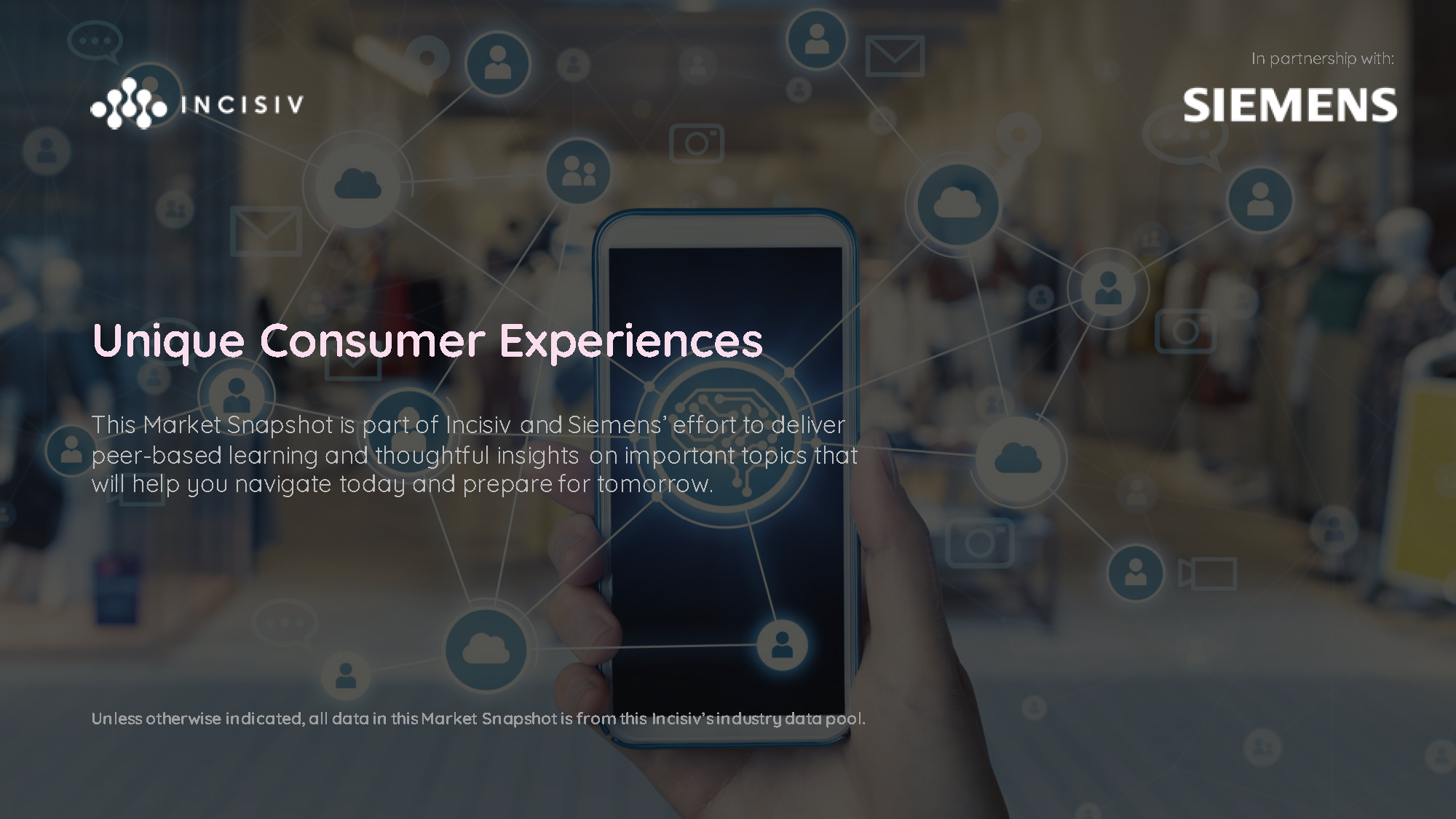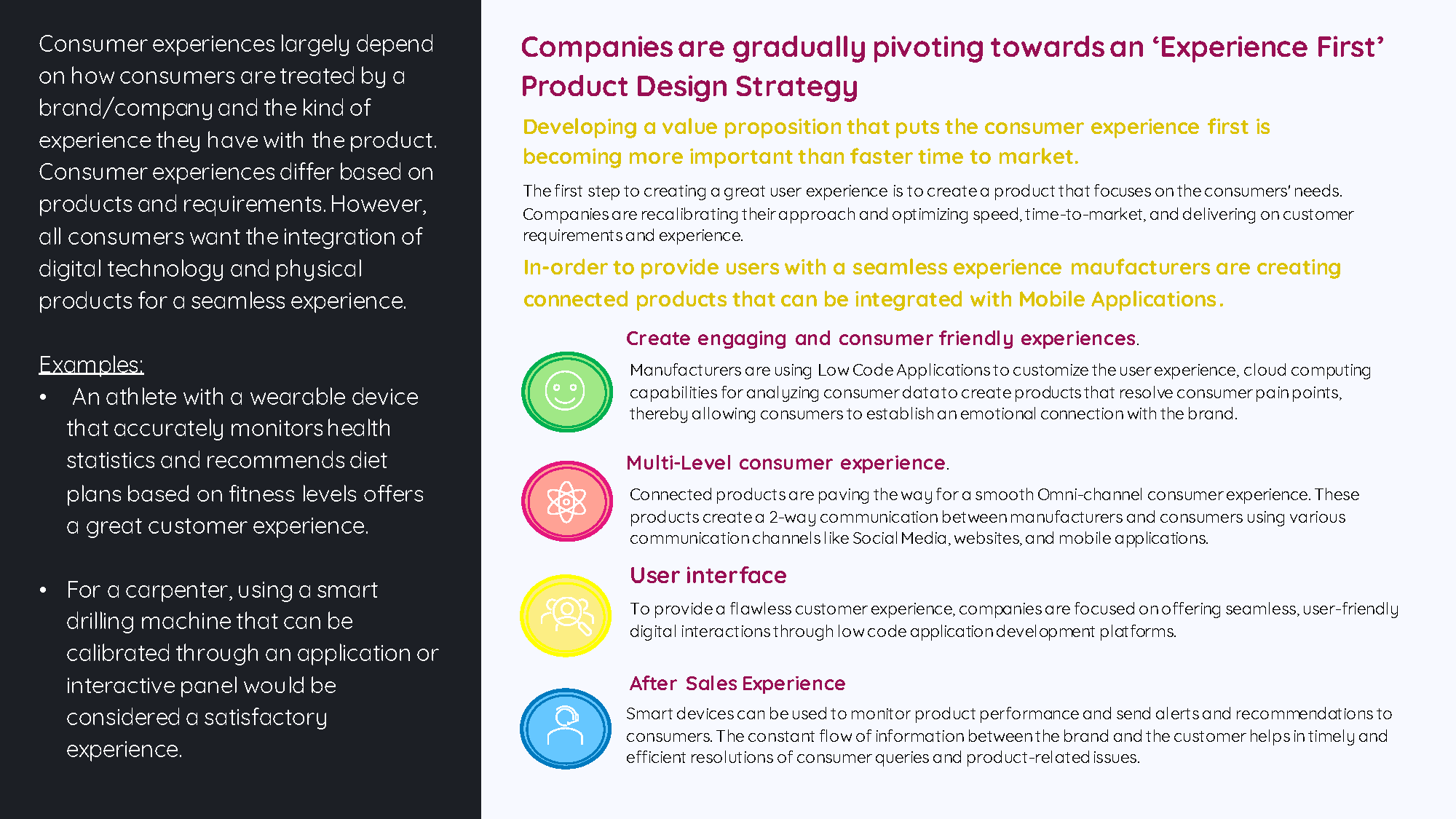Market Snapshot
Unique Consumer Experiences
Q3, 2021
Companies are gradually pivoting towards an ‘Experience First’ Product Design Strategy. The first step to creating a great user experience is to create a product that focuses on the consumers’ needs. Companies are recalibrating their approach and optimizing speed, time-to-market, and delivering on customer requirements and experience.
In order to provide users with a seamless experience, manufacturers are creating connected products that can be integrated with Mobile Applications. Consumers are increasingly engaging with connected devices, from Home Appliances to Fitness, consumers are now looking for customized experiences and services. Considering this, businesses are increasingly investing in user experience for cross-selling and upselling, improving customer retention, and improving customer satisfaction.
FOUR KEY B2C COMMERCE IMPERATIVES
 Incisiv
Incisiv
Here’s a preview of the report. The full report is available for free download via the form below.


















As consumers continue to reshape their expectations,
enterprises must contend with a uniquely challenging landscape.
The consumer technology landscape is forever changing.
From Pinterest to TikTok, WeChat to Instagram, new experiences can rapidly gain consumer adoption and relevance.

From augmented reality to voice, smartwatches to chatbots, consumers are constantly embracing new interaction paradigms.
Commoditized convenience is eroding loyalty and margin.
Consumers expect convenience. If you can't deliver it, they'll go elsewhere - e.g. next day shipping becoming the new standard.
Walmart will reportedly lose USD 1 billion on eCommerce revenue of USD 21 billion this year as it faces challenges in its bid to complete against Amazon – from trouble integrating its DNVB acquisitions to impact on margin from its next-day delivery operations.
Consumers value experiences that are curated to fit their lives better.
They want to engage, be served, and transact at their time, their pace, their place. They have little patience, infinite choice and the freedom to swipe left at the slightest hint of friction.





